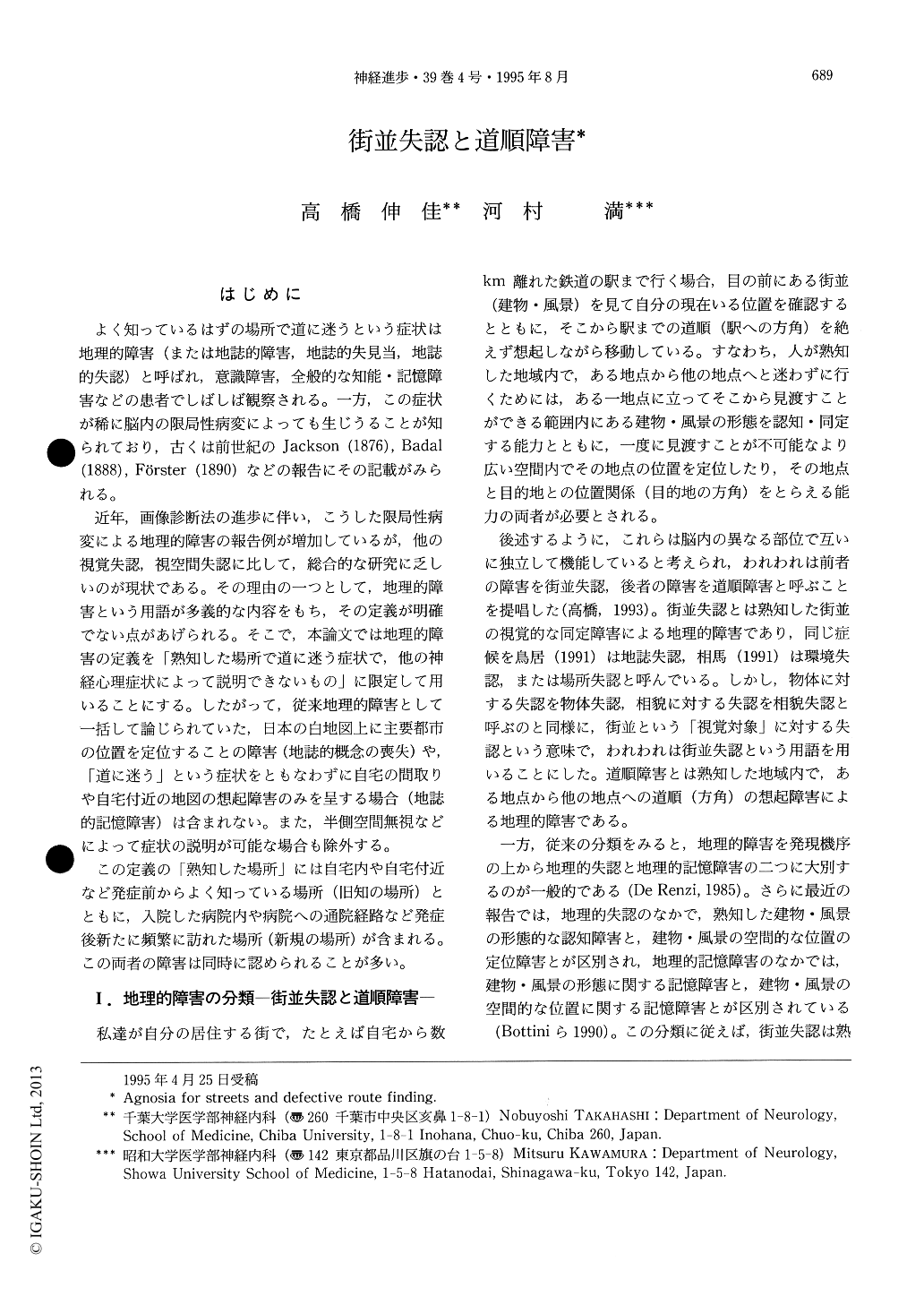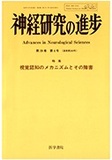Japanese
English
- 有料閲覧
- Abstract 文献概要
- 1ページ目 Look Inside
はじめに
よく知っているはずの場所で道に迷うという症状は地理的障害(または地誌的障害,地誌的失見当,地誌的失認)と呼ばれ,意識障害,全般的な知能・記憶障害などの患者でしばしば観察される。一方,この症状が稀に脳内の限局性病変によっても生じうることが知られており,古くは前世紀のJackson(1876),Badal(1888),Forster(1890)などの報告にその記載がみられる。
近年,画像診断法の進歩に伴い,こうした限局性病変による地理的障害の報告例が増加しているが,他の視覚失認,視空間失認に比して,総合的な研究に乏しいのが現状である。その理由の一つとして,地理的障害という用語が多義的な内容をもち,その定義が明確でない点があげられる。そこで,本論文では地理的障害の定義を「熟知した場所で道に迷う症状で,他の神経心理症状によって説明できないもの」に限定して用いることにする。
Topographyical disorientation was thought to be divided into two groups : agnosia for streets and defective route finding.
Patients with agnosia for streets can morphologically perceive familiar buildings and streets, but cannot identify them. They can, however, remember their way around familiar areas. The six patients in our study all exhibited a common lesion : the posterior part of the right parahippocampal gyrus. We think this region plays an important role in the development of agnosia for streets.

Copyright © 1995, Igaku-Shoin Ltd. All rights reserved.


